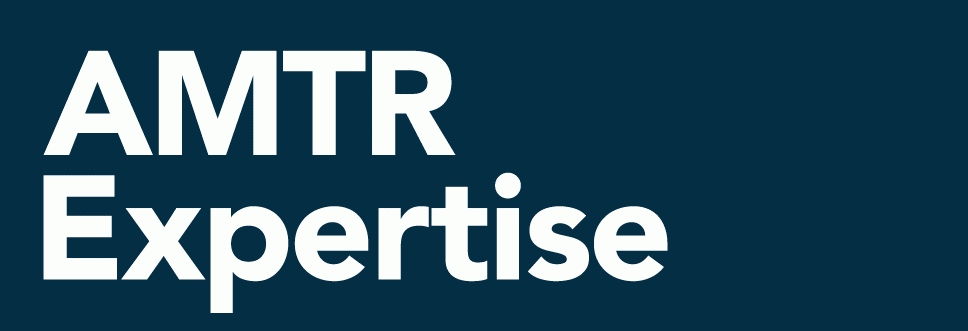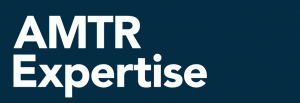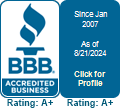For shippers, getting goods to customers in a timely manner is of critical importance. The process is often so time-constrained that a “ship first and ask questions later” approach may be used. Diversions, reconsignments, contract renewal delays or simply shipping to a new destination can create questionable billing. The problem is, however, that such questions are rarely revisited, as the demands of the day are unrelenting. Because of this, the resulting bills are often inaccurate, yet still paid, in order to keep processes moving.
At AMTR, looking back in time is part of our SMART Auditing® process. Carriers are usually quite accommodating and fair in cases where past billing was inaccurate. AMTR takes the time to ask our clients’ questions and have incorrect bills corrected long after they are paid. AMTR is always committed to finding every opportunity to ensure our clients pay the lowest possible rate for freight, even when it means looking back in time.
The year 2018 is near, and with it will come rate increases for some carriers. Shippers are paying premium prices for freight, as there are high volumes of shipments coupled with reduced capacity. These factors are causing an increase in rates for shippers and some new record highs for those in the transportation industry.
The spot market for reefer rates achieved a three-year high in mid-November, with an average rate of $2.40 per mile. In October, rates for mid-sized freight brokers hit a two-year high, netting a per-load profit of almost $62.00. Another two-year high was noted for revenue per employee in the transportation sector; it was reportedly 183% higher than in October 2016—all according to DAT.com. As of November, the national average for spot market van rates was well on its way to hit a three-year high.
In 2017, these record highs have been a result of increased rates for shippers. This is also true in the LTL market. Several of the larger LTL carriers took rate increases in mid-2017. Some of these carriers include ABF Freight (May), Estes Express (June), Oak Harbor Freight Lines (July), AAA Cooper (July) and Old Dominion Freight Lines (August). Two of the largest LTL competitors, FedEx Freight and UPS Freight, will be implementing 4.9% rate increases before 2018.
Prepare for the new year by knowing what increases are coming. It is believed that increases will continue in the spot rate market, in LTL carrier general rates and in fees within carriers’ rules tariffs.
Unnecessary repairs mean criminal fines for United Industries, the Progress Rail Services unit out of Long Beach. Federal investigators determined employees had chosen random cars for repairs in order to increase revenue, and later dumped the parts to conceal the evidence. United Industries has agreed to pay a $5 million fine after admitting to these criminal activities.
In other news, possible STB vacancies may lead to a lone member situation. Two seats were added in 2015; however, Chairman Dan Elliott resigned in September and Deb Miller’s term expires December 31. Should Miller vacate her seat in lieu of remaining for a holdover year, Ann Begeman would be the only member left until the White House fills the remaining seats.
The Federal Railroad Administration (FRA) is currently investigating the safety impacts of operating increasingly long freight trains on U.S. railroads. Due to a number of accidents and recent derailments, the FRA is increasing their inspections, and the Government Accountability Office will launch a study on the impacts of longer trains. CSX, in particular, has increased its train length by more than 400 feet since March 2017, when CEO, Hunter Harrison, came on board. The National Transportation Safety Board (NTSB) rail division head, David Bucher, told Reuters that “train lengths are increasing across the country. It is becoming more and more common, not just with CSX.” Currently, train length is unregulated and any likelihood of regulating it would face stiff opposition. “Longer trains maximize crews, locomotives, fuel and other resources,” said Union Pacific spokeswoman, Raquel Espinoza. The NTSB, FRA and STB do not collect data on train length, except for specific accidents or mediations.
Regardless of what is shipped or how many cars it takes, AMTR has seen problems not only in safety, but in the invoicing of product. Many shippers combine different commodities to build trains, and, in some cases, train contents may be intended for more than one consignee at the destination. Computers often take an “all or nothing” approach when assigning a rate to a train with a specific amount of cars. Some railroads offer over a dozen rates for different car contingencies, and others may draw a line in the sand with a minimum. Errors may occur on both sides of the EDI process, and all it takes is one mistake to incur a significant overcharge. A trained eye, combined with human logic, will catch this type of problem.
American Truck and Rail Audits, Inc. (AMTR) is proud to announce that it has joined the Blockchain in Transport Alliance.
“As a company that provides a service that sits at the intersection of both shipper and carrier data, we are excited to get in on the ground floor of the blockchain standards setting and adoption discussion. We can’t audit for our clients without integrating shipping, financial and product data. Any changes to how that data looks, flows, or is exchanged are of critical importance to us. We understand that blockchain technology is transformative. We want to be involved as the technology develops, and feel we have some unique expertise to offer to the standards development effort as well,” says AMTR CTO, Jim Sacrey.
A blockchain is a type of distributed ledger, comprised of unchangeable, digitally recorded data in packages called blocks. Each block is then “chained” to the next block, using a cryptographic signature. This allows blockchains to be used like a ledger, which can be shared and accessed by anyone with the appropriate permissions. The built-in security mechanisms of blockchain make it extremely difficult for hackers to compromise servers participating in the network where the distributed ledgers are stored.
BiTA will build the first set of transportation industry-specific blockchain standards by engaging with the brightest minds and the most influential leaders in transportation. BiTA standards are intended to create a common framework to help organizations develop and implement blockchain technology. For AMTR, partnering with BiTA is an exciting and strategic opportunity to be involved in the industry, to stay informed for our clients, and to evolve our own internal technologies, as well.
Railway Gazette reported recently that Chief Operations Officer (COO) Cindy Sanborn, Chief Sales and Marketing Officer Fredrik Eliasson, and General Counsel and Corporate Secretary Ellen Fitzsimmons left CSX on November 15th. Former CN executive James Foote will join the company as COO. Nathan Goldman will step up from his current role as VP of Risk Compliance to serve as Chief Legal Counsel and Corporate Secretary.
Railway Age also announced the appointment of Joseph Parsons as the new General Manager of the Iowa Interstate Railroad, as Jerome Lipka retires from the position as President. Al Satunas will assume the position of Chief Operating Officer.
Chicago, Illinois is the busiest rail interchange in North America. Fox Business reports that, in an effort to relieve congestion, Canadian National and Norfolk Southern railroads have brokered a deal to interchange some traffic at Elkhart, Indiana, bypassing the Chicago network. The resultant savings of transit time should be a boon to shippers, providing additional fluidity throughout the rail network. This unusually high level of cooperation in the Chicago area is a particularly timely effort during a time of heavy competition among the eastern railroads.
Raymond P. Martinez was chosen by the Trump administration late last month to become the newest leader of the Federal Motor Carrier Safety Administration (FMCSA). Martinez, former Chief Administrator of the New Jersey Motor Vehicle Commission since 2010, vocalized his support of the Electronic Logging Device (ELD) mandate in the early days of his FMCSA leadership. “The goal is not to cripple commerce. The goal is to make roadways safer,” said Martinez, who acknowledges that the ELD mandate could cause big problems for independent truck owners.
The ELD mandate has technically been in effect for more than 21 months, as the FMCSA rolled out a three-phase compliance plan for those carriers and independent truckers subject to the rule. Phase 1 of this plan started February 16, 2016, and was to be used as a period for carriers and drivers to prepare for compliance. This phase ends December 18, 2017, and marks the beginning of Phase 2. Phase 2 is focused on phased-in compliance and runs through December 16, 2019. Under Phase 2, only Automatic On Board Recording Devices or ELDs that are self-certified and registered with the FMCSA will be accepted. There is some flexibility in Phase 2, however, as safety officials will not enforce the mandate’s out-of-service criteria until April 1, 2018. Phase 3, which mandates full compliance, will require all drivers to utilize self-certified ELDs that are registered with the FMCSA.
AMTR will continue to provide updates about legislation, implementation and any results, positive or negative, from ELDs.
In trucking, the transport of hazardous materials is highly regulated. A shipper is required to notate several things on a bill of lading if a chemical being transported is explosive, flammable, corrosive, combustible, toxic, poisonous or otherwise dangerous. The specific type of hazard must be indicated, as well as the packing group to which it belongs. Packing groups indicate what degree of danger the product presents—I meaning high danger, II meaning medium and III meaning low. Also affecting classification is the handling unit, such as cartons, drums or tanks; therefore, the handling unit type should be listed on the bill of lading. The presence of this information serves to inform drivers what placarding, if any, is necessary when moving the product. It also serves to help carriers determine which NMFC item and class apply.
It is very important that shippers indicate the type of handling unit, the applicable hazard class (from Class 1 Explosives to Class 9 Miscellaneous Dangerous Goods) and the correct packing group that applies to the dangerous goods being shipped to avoid being overcharged. If a shipper indicates a hazard class with no packing group, for instance, the carrier has the right to assume that the highest danger packing group—Packing Group I—applies. The lower the packing group, the higher the charges are, typically. The carrier also has the right to assume that the handling unit type used was the one that results in the highest charges.
Don’t let hazardous goods become hazardous to freight charges. AMTR’s SMART auditors are experts in hazardous goods and NMFC classifications. Let us audit your freight bills today and save you big money!
The rail industry is working hard to implement a number of new technologies that will improve operations and competitiveness. A recent article by Forbes contributor Steve Banker states that rail freight market share has slipped somewhat over faster, more reliable modes of transportation, such as truckload and parcel services. Although moving freight via rail is a relatively low-cost mode of transportation, it is slow by comparison. According to September 2017 statistics of several Class I railroads in North America, the railroads’ speeds averaged about 25 miles per hour. In order to compete, railroads are turning to new technologies in order to provide their customers with better, faster, safer service, and to boost market share.
Initiatives like Positive Train Control (PTC), although legally mandated, will improve safety and increase throughput. Another initiative, Digital Rail Services, launched by tech giant Siemens in Atlanta, Georgia, will create what it calls the “Internet of Trains”. This cloud-based industrial data analytics platform will be able to monitor traffic, identify problems and implement remote diagnostics by collecting and analyzing billions of points of data and turning them into action.
Although such advancements and investments in big tech and big data are good news for the rail industry, they will eventually translate to shipping costs. While increased efficiency in freight movement is welcome, there will still be a need to confirm the billing that follows. AMTR auditors know that change of any kind often generates billing issues—many of which are unexpected and certainly not captured in computer-based audit algorithms. In these cases, there is simply no substitute for human interpretation and intelligence. No matter what the changes, the transportation experts at AMTR stand ready to ensure clients’ freight costs are not adversely impacted.






